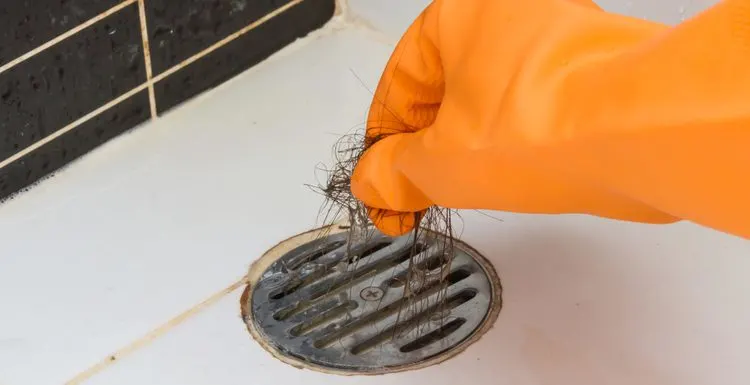Wondering how to unclog a bathroom drain?
Don’t worry, I actually had this pesky problem a few weeks ago, which is what led me to publish this guide. Take the steps below, and you’ll have a clear drain in no time.
Wondering How to Unclog a Bathroom Drain?
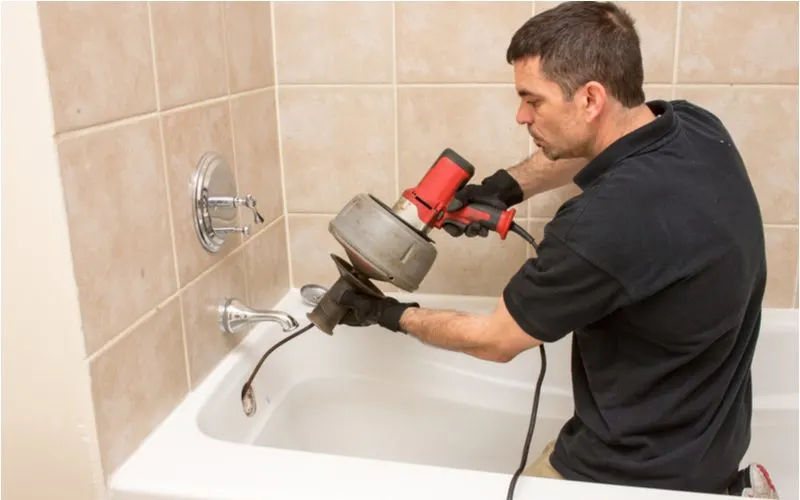
David Spates/Shutterstock
Are you trying to unclog your bathroom drain and failing miserably?
Well, you’ve come to the right place. While it might seem like an impossible task, it’s very doable if done right.
And believe it or not, everything you need is available at home or at your local hardware store. So before you give up and contact a plumber, here’s a step-by-step guide on how to unclog the bathroom drain.
We know how frustrating a clogged bathroom can be. While unclogging may not require you to call a plumber, there are some steps to follow if you’re to fix the problem successfully. In summary, these steps are:
- Remove the drain strainer
- Remove the drain stopper
- Get rid of any excessive gunk around the drain strainer and stopper.
- Insert the drain stick into the drain.
- Pull the drain stick out.
- Test the bathroom drain to see if you have unclogged it.
- Take back the drain stopper or cover just as you removed it.
How to Unclog Bathroom Drain in 7 Steps
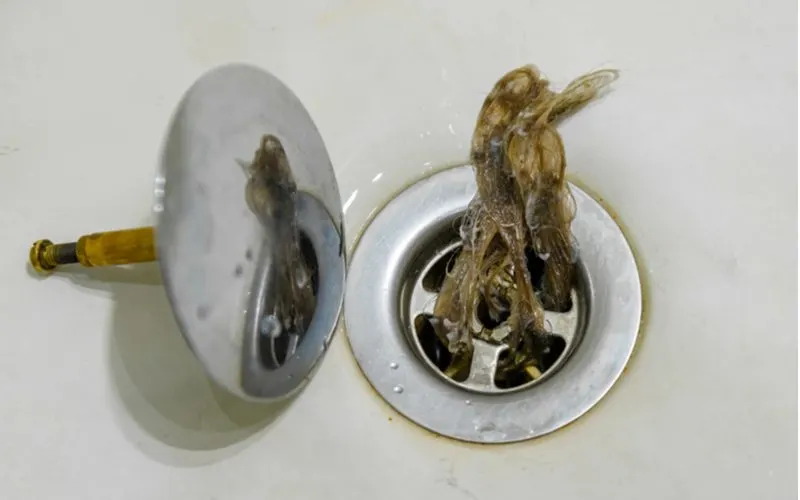
Travis182/Shutterstock
The fact that the first time you tried unclogging your bathroom drain didn’t go well doesn’t mean you can’t do it all by yourself.
Granted, it may not be easy. However, following the steps outlined below will help you fix the problem, and you can proceed to bathe or take a shower stress-free.
Step 1: Remove the Drain Strainer
Soap and hair accumulate below the drain strainer, often located just over or in the drain. The good news is that most strainers are easy to remove manually. However, some have screws you have to remove using a screwdriver.
Just ensure you use the right screwdriver to avoid straining. It’s worth noting that choosing the screwdriver to use can sometimes be confusing or challenging.
The secret is to check the screw head and find a screwdriver that matches it. The screwdriver should fit into the strainer screws easily.
Hold the screwdriver by the handle and turn all the screws surrounding the strainer until they become loose. Place these in a secure location because you will need them later. You can start unclogging the drain.
Step 2: Remove the Drain Stopper
While most drains have strainers, some have tub stoppers. In some cases, a drain will have both the strainer and the stopper.
A stopper happens to be inside the drain, but it’s easier to remove because it has no screws that hold it down.
All you have to do is twist the stopper, and it comes off. If your drain has both, first remove the stopper before you can unscrew the strainer and remove it too.
Step 3: Get Rid of Any Excessive Gunk Around the Drain Strainer and Stopper
Over time, it’s likely that excessive gunk accumulated on the stopper or drain strainer. This includes soap and hair scum.
Clean all this, and if you have to scrub the stopper and strainer, do it. Of course, this is necessary if these two components are dirty and sticky.
Step 4: Insert the Drain Stick Into the Drain
The next step towards unclogging your drain is to insert your drain stick down the drain.
Ensure to push it deep enough until it hits a drain trap. A drain trap is a small, curved part of a drain that retains some water every time the sink drains.
This small amount of water comes in handy in sealing the drain so that no sewer gas can escape and enter your home.
Keep pushing the drain stick down the drain trap. The flexibility of the stick allows it to bend, accessing the areas underneath.
Step 5: Pull the Drain Stick Out
Typically, a claw features numerous small interlocking hooks. These make it grab hair, allowing you to pull the gunk out of your bathroom drain.
Once the claw is out, you must clean the gunk off of it. This is necessary if you’re going to use the drain stick in the future.
Remember, soap and hair can accumulate pretty fast. In fact, within a few months, you may have to unclog your bathroom drain all over again.
Therefore, there’s no doubt that a drain stick is a handy item you need to have. Fortunately, you can purchase this at your local store.
Step 6: Test Your Bathroom Drain to See if You Unclogged It
It’s time to see whether your efforts bore fruit. Pour water into your bathtub and leave it to drain. If the water flows down the drain smoothly, it means you’ve succeeded.
If it doesn’t, it means it didn’t unclog, in which case you can repeat this method once more or try a different method.
Step 7: Put Back the Drain Stopper or Cover
Assuming you succeeded in unclogging the blocked drain, now it’s time to replace the stop the same way you removed it.
Just take the strainer and screws, and using the screwdriver, fix them into position. For the stopper, you only need to place it on top of the drain like you found it.
Things to Consider
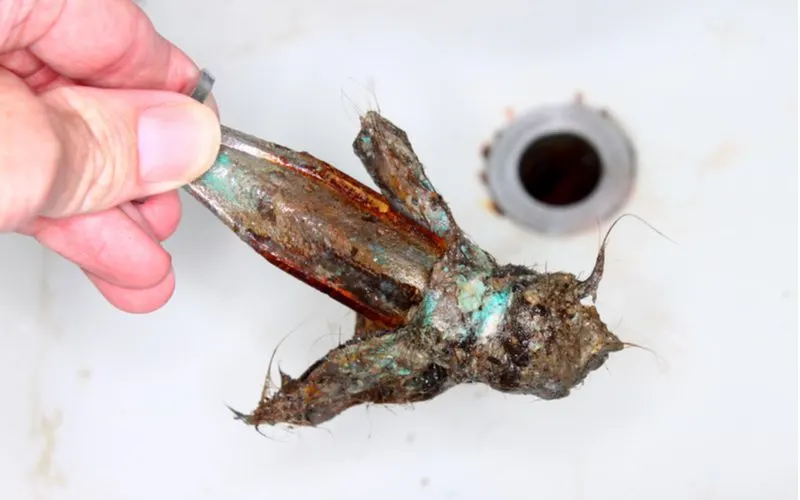
Jason Patrick Ross/Shutterstock
Now you know how to unclog your bathroom drain. However, there’s more. There are some things you need to factor in. These include:
- If you previously poured chemical drain cleaner into the drain in your first attempt to unclog it, it’s recommended that you wear rubber gloves and goggles. This is a protective measure against the toxic effects of the chemicals. You just never know. It may end up splashing up, hitting your eyes and skin. Some of these chemicals can even blind you. Additionally, keep in mind that drain clogs are often loaded with bacteria that you should not come into contact with.
- We don’t suggest using a chemical cleaner when unclogging your bathroom drain. These chemicals are corrosive and might end up corroding your pipes. Yes, they’re effective, and you’ll solve the problem, but at a cost. These chemicals offer a temporary solution that may later result in a bigger problem.
- Rather than improvise, obtain a drain stick and screwdriver from your local store. Homemade tools you improvise may end up breaking inside the drain or getting stuck in there, making the situation worse.
- If the drain claw never worked out, don’t give up. Keep in mind that there are alternatives you can use. So, it’s a great idea to be ready with a backup plan. Of importance to note when turning to these other methods of unclogging the bathroom drains is that you should never use professional-grade plumbing tools if you’ve never used them before. These alternative ways of unclogging a drain include using a toilet plunger or baking soda.
- Before you can start unclogging, beware of the type of clog you’re dealing with and its location. This helps you plan your approach so that you can succeed.
Frequently Asked Questions
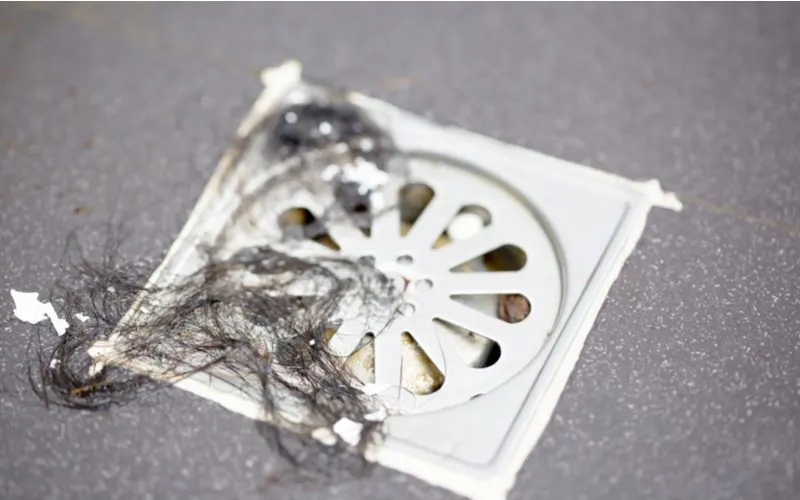
Kamonwan Wankaew/Shutterstock
Below are some frequently asked questions about how to unclog a bathroom drain:
Why Is There a Clog in My Bathroom Drain?
Soap, hair, toothpaste, scum, and other grooming chemicals quickly build up in bathroom drains, forming an almost impassable clog. However, you don’t have to call a plumber right away. Instead, try unclogging the drain yourself. Using a drain claw is one of the best methods as it’s easy and inexpensive.
What Should I do if I have a Drain Clog?
The good news is, you don’t have to call a plumber right away. First, remove the stopper and strainer to allow you to access the drain. Then try unclogging the drain using a drain claw.
Avoid using any dangerous material such as corrosive chemical drain cleaners or sharp objects as you may end up damaging the pipes. Also, wear safety gear to protect yourself from the bacteria present in drain clogs.
How Do I Unclog a Tub Drain That Has Cat Litter in It?
Cat litter cannot go any farther after reaching the drain trap. Therefore, you only need to remove the stopper and insert the drain stick down, and it’ll come out with the litter.
Is There Another Way of Unclogging My Bathroom Drain Besides Using a Drain Claw?
There are other methods you can use to unclog your drain. These include baking powder, a toilet plunger, snaking your drain, pouring boiling water, or vinegar.
Why Should You Avoid Chemical Cleaning Aids When Unclogging Bathroom Drain?
Chemical drain cleaners are known to be corrosive. Therefore, they might damage your pipes, especially if they’re metallic.
Granted, they’re usually effective, but for the short term, because they may cause harm in the long run.
So, How Do You Unclog Bathroom Drain?
So there you have it—how to unclog a bathroom drain. We hope you find this guide helpful in fixing your problem. As long as you have the right tools and follow the steps mentioned in our guide, unclogging a bathroom drain is easy.
It might seem difficult when you try using the drain claw the first time around, but you’ll get the job done. Fortunately, the tools you require to unblock your drain are readily available.

